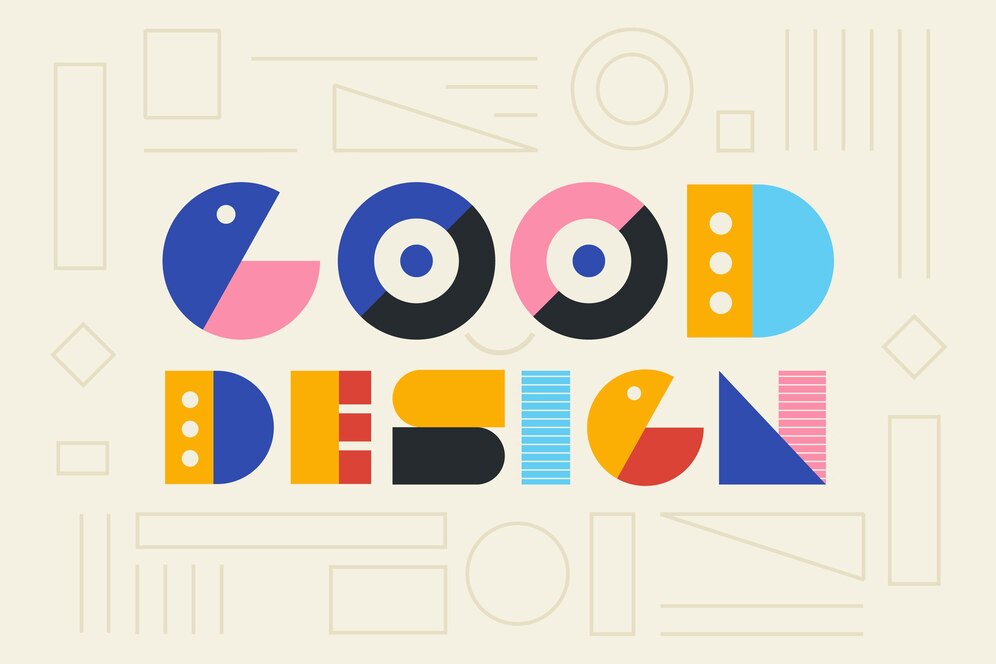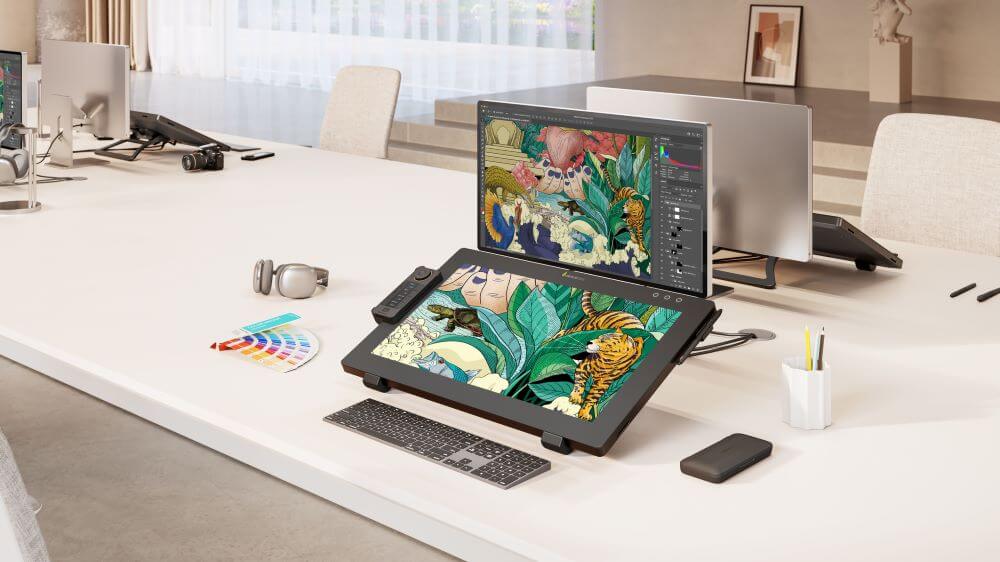Design is all around us, shaping the way we perceive and interact with the world. From the aesthetics of a smartphone's user interface to the layout of a printed page in your favorite book, the principles and elements of design play a crucial role in our daily lives. In this article, we will delve into the fundamental principles of design, understanding how they shape the visual design elements and principles and principles that surround us in the world of art.
Basic principles of design
Design principles serve as the foundation upon which visual compositions are built, forming the core elements of design. Let's explore some of these basic principles of art and design that guide the creation of captivating and harmonious designs:
1. Contrast: Contrast involves the juxtaposition of different visual design elements and principles to create visual interest. It can be achieved through variations in color, size, shape, or texture. For example, using bold, dark typography against a light background creates a striking contrast.
2. Alignment: Alignment ensures that elements in a design are visually connected and organized according to the principles of art. Aligning elements along a common axis creates a sense of order and coherence, which is vital in design. Think of how text lines up neatly in a well-designed book.
3. Perspective: Good perspective can greatly enhance the design of the picture effect, so that people watching the flat painting has a sense of three-dimensional, beginners can be practiced from the one-point perspective and two-point perspective drawing method.
4. Repetition: Repetition involves the use of consistent visual design elements, such as colors, shapes, or patterns, to establish a sense of unity and rhythm in a design. It reinforces branding and recognition, as seen in the consistent use of logos.
5. Proximity: Proximity refers to the grouping of related elements close to each other. It helps establish relationships between elements and guides the viewer's eye, a key aspect of the elements of design in art. In a web layout, for instance, links and their associated text are often placed close together.
These basic principles of design provide a strong foundation for creating visually appealing designs. However, to truly master design, one must explore more advanced principles that add depth and sophistication to their work.
An Advanced Aesthetic Perspective on Design Principles
As designers gain experience, they begin to delve into more advanced principles that contribute to the overall aesthetic and impact of their creations. Here are some advanced design principles to consider:
1. Focus: The principle of focus directs the viewer's attention to a specific element or area within a composition, emphasizing the emphasis principle of design. Achieving focus involves using contrast, isolation, or positioning to make the focal point stand out.
2. Hierarchy and Balance: Hierarchy establishes a visual order of importance, guiding viewers through the content. Balance ensures that the visual weight of elements is distributed evenly, creating a sense of stability, an essential aspect of visual design elements and principles and principles.
3. Blankness and Simplicity: The strategic use of white space or negative space can enhance the clarity and elegance of a design. Simplicity involves the removal of unnecessary elements to achieve a clean and minimalist aesthetic.
These advanced principles allow designers to create sophisticated and visually impactful compositions. As you delve into your own design projects, remember to experiment with these principles of design to achieve the desired effect.
10 Essential Design Books Every Designer Should Read
To further expand your understanding of design principles and techniques, consider delving into the world of design literature. Here are ten essential design books that every designer should explore:
1. The Design of Everyday Things by Don Norman
2. Universal principles of design by William Lidwell, Kritina Holden, and Jill Butler
3. Thinking, Fast and Slow by Daniel Kahneman
4. Steal Like an Artist: 10 Things Nobody Told You About Being Creative by Austin Kleon
5. Interaction Design: Beyond Human-Computer Interaction by Jennifer Preece, Yvonne Rogers, and Helen Sharp
6. Grid Systems in Graphic Design by Josef Müller-Brockmann
7. Don't Make Me Think: A Common Sense Approach to Web Usability by Steve Krug
8. The Elements of Typographic Style by Robert Bringhurst
9. Designing Brand Identity: An Essential Guide for the Whole Branding Team by Alina Wheeler
10. Sapiens: A Brief History of Humankind by Yuval Noah Harari
These books offer valuable insights into design principles, user experience, creativity, and the broader cultural context in which design operates. They are essential reads for anyone looking to deepen their design knowledge.
Powerful Design Tools Recommended for You
As you embark on your design journey, having the right tools can make a significant difference in your creative process. Consider incorporating Xencelabs design tools into your workflow for an enhanced and efficient experience. Here are two recommended products that align with the principles of design:
Xencelabs Pen Tablet: This pen tablet offers an ergonomic design, allowing for precise and comfortable input, essential for the elements of design. It's perfect for sketching, digital painting, and graphic design.
Xencelabs Pen Display 24: For a more immersive design experience, the Pen Display 24 provides a high-resolution display that accurately reflects your artwork. Its customizable shortcut buttons streamline your workflow, making it ideal for professionals and studio use, aligning with the principles of design.
Conclusion
In conclusion, the principles and elements of design serve as the building blocks of visual communication and creativity. Whether you're just starting your design journey or seeking to elevate your skills, understanding these principles is essential. As you apply these principles and elements of design to your work, don't forget to explore advanced aesthetics and draw inspiration from essential design literature.
As well as when designing for print, web, user interfaces, or any other medium, Xencelabs will always be your trusted partner on the path to creating compelling and impactful visuals.

























